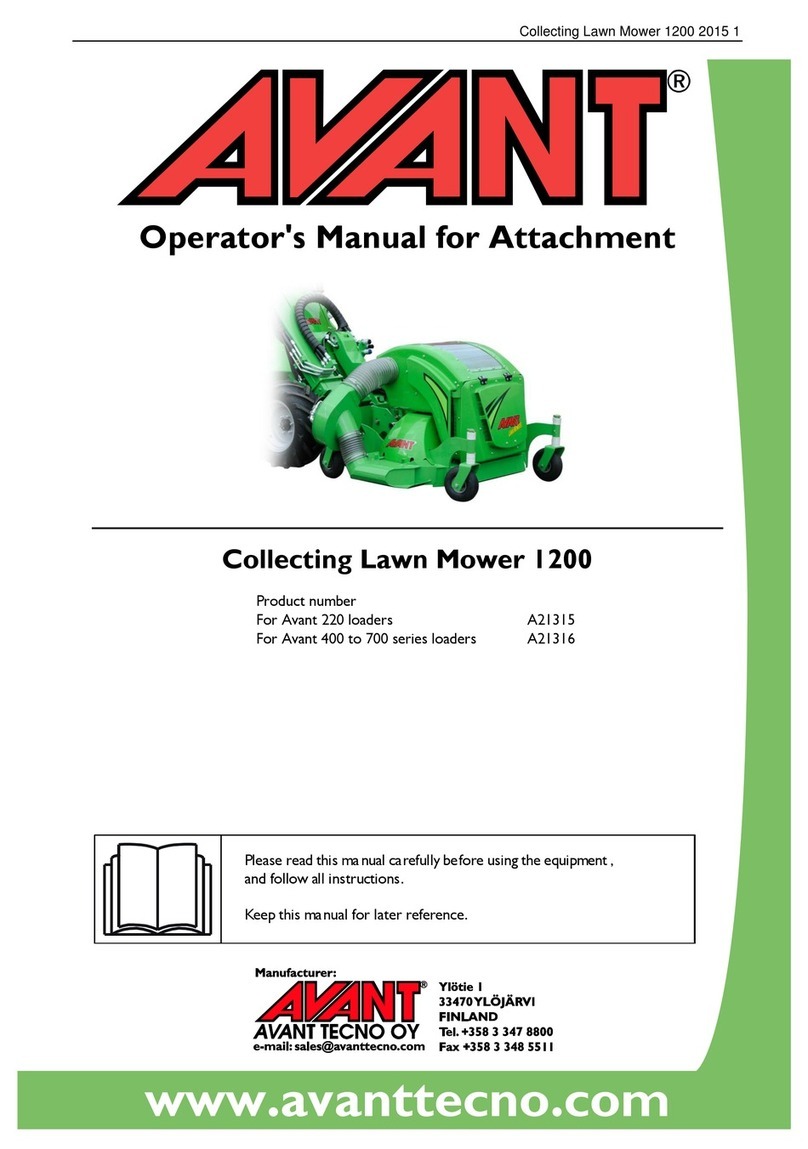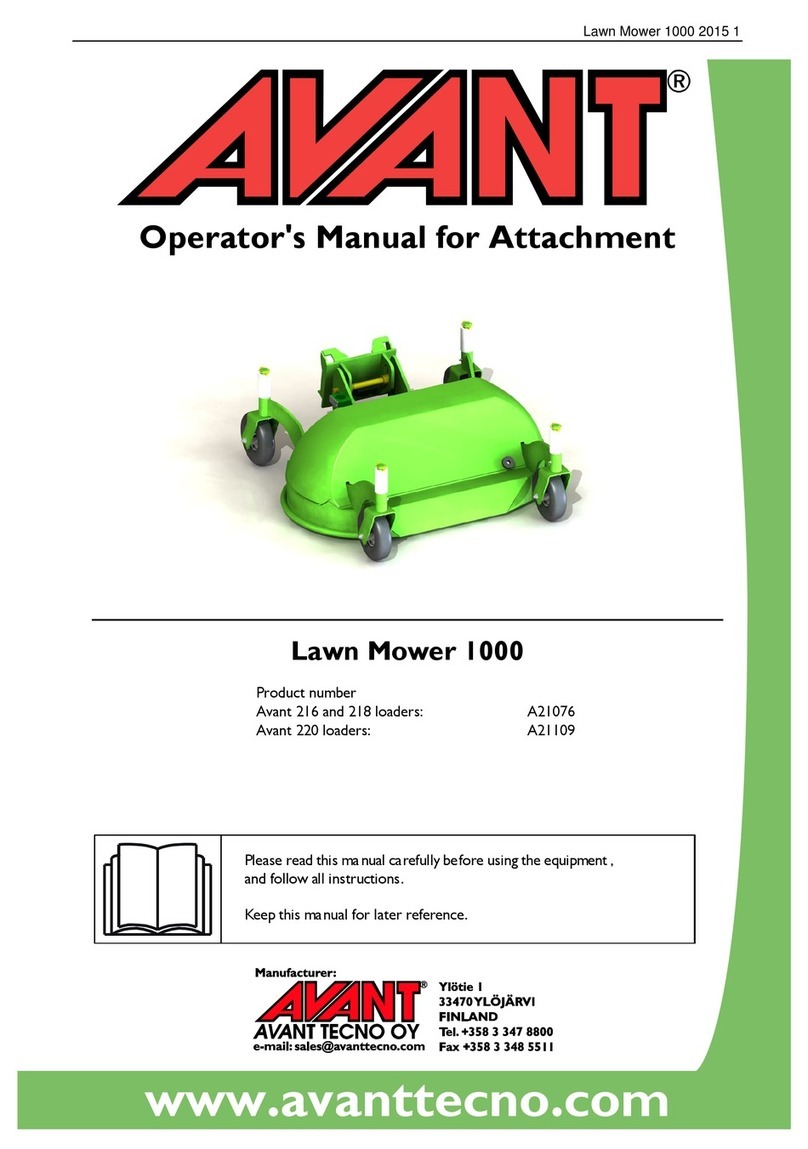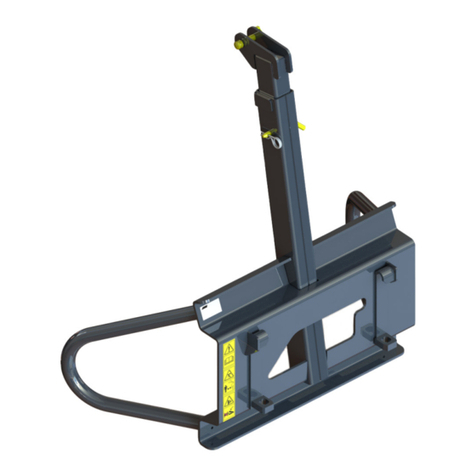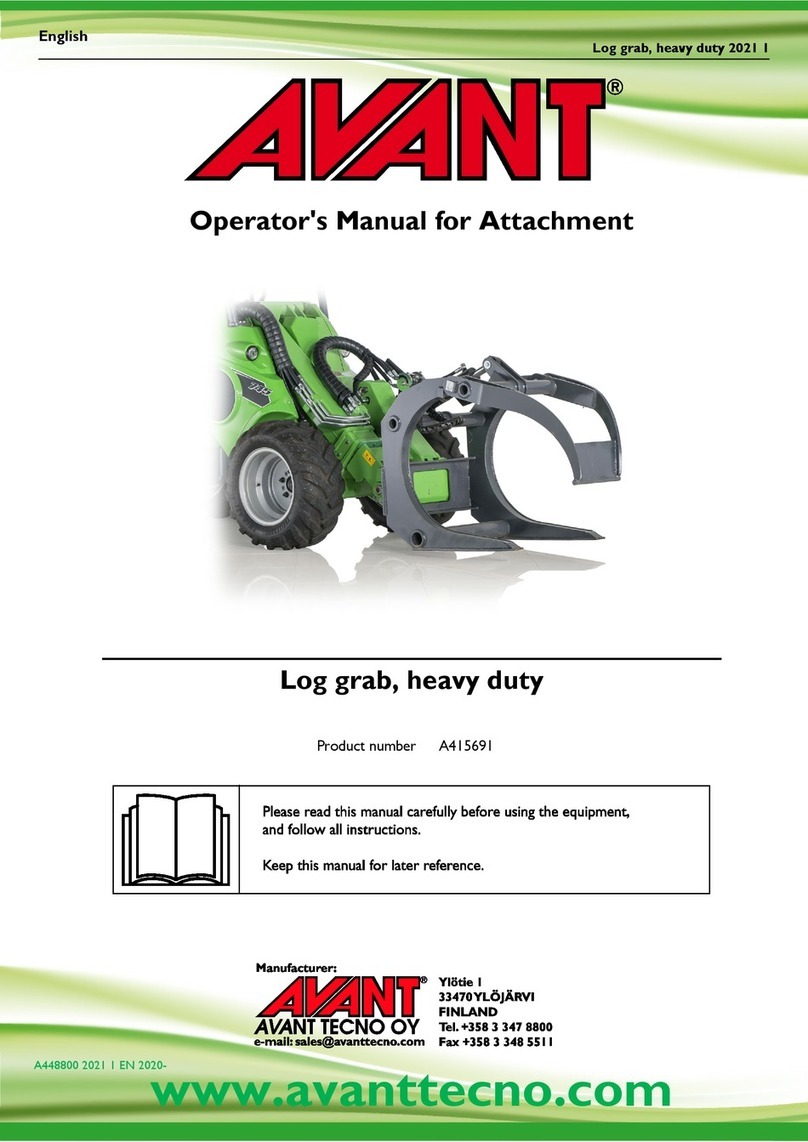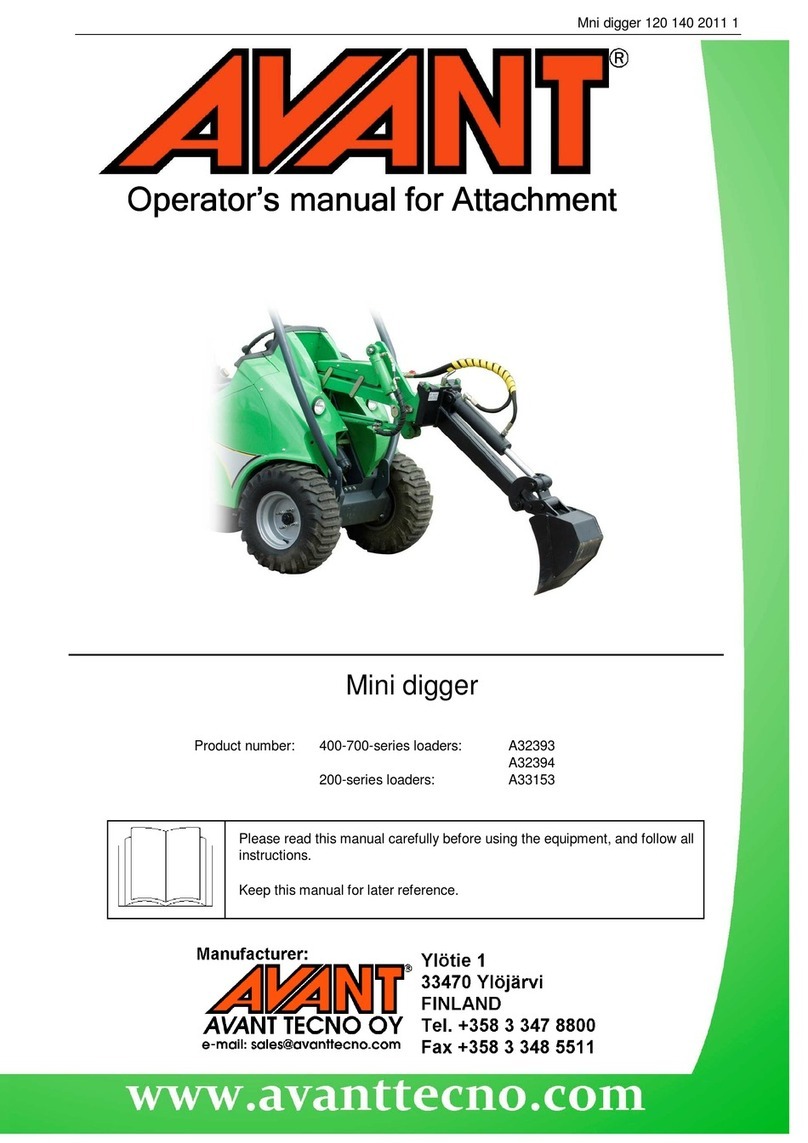
5 (26)
2. Designed purpose of use
The AVANT Lawn Mower 1200 is an attachment suitable for use with AVANT multi purpose loaders shown in
Table 1. The lawn mower is suitable for residential and professional use as well. It is intended to be used to
mow lawns on level, tended areas free of rocks, tree stumps, large branches, or other similar obstacles. The
robust lawn mower can also shred tree leaves and small branches during lawn mowing. The lawn mower is
equipped with mechanical floating linkage system, which allows the mower to follow the ground freely,
eliminating the need for the loader boom floating.
As standard, the mower is equipped with a mulching kit, and the clippings will be shred under the mower.
Also, a side discharge chute is provided as standard which makes it easy to cut longer grass, or allows higher
mowing speed. The mower can also be transformed to rear ejecting type.
The Lawn Mower 1200 is also available as a version with a collector unit for the clippings. This operator’s
manual is applicable only for the models without the clippings collector unit. Also, a different model of Lawn
mower 1200 is available for other loader models.
Either a side cover, side discharge chute, mulching kit, or collector unit must be installed to the the mower.
The use of the mower without any side guard in place is dangerous to both the operator and any person
nearby, and therefore it is strictly prohibited. The lawn mower is not intended for mowing long hay shrub or
equivalent taller vegetation. The lawn mower cannot be used in a hung position; it is meant to run on its own
wheels<MowerType>. For mowing long hay, we recommend the AVANT Flail Mowers.
The attachment has been designed to require as little maintenance as possible. The operator can perform
regular maintenance tasks. All repair work can’t be performed by the operator, and demanding repair and
maintenance operations are to be left for professional maintenance. All maintenance work must be done using
proper safety equipment. Spare parts must be identical with original specifications, which can be ensured by
using only original spare parts. A separate spare parts catalog may be available, consult your Avant dealer.
Familiarise yourself with the manual's instructions regarding service and maintenance. Please contact your
AVANT retailer if you have additional questions about the operation or maintenance of the equipment, or if
you require spare parts or maintenance services.
Table 1 - Lawn Mower 1200 - Compatibility with Avant loaders
520
R20
525LPG
R28
528
630
Normally the width of the mower should be equal to or greater than the width of the loader. For compatibility
with a model not shown in table, contact your Avant retailer.












